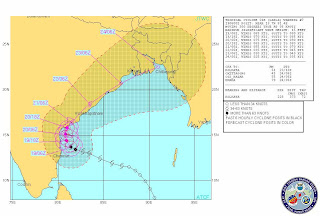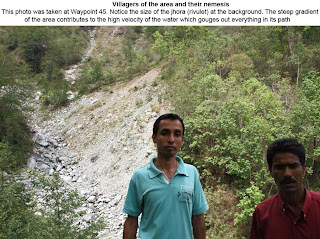STH has been doing some CBDRM (Community Based Disaster Risk Management) work in CHIBO/PASHYOR villages for the past few months (see here). These villages bore the brunt of landslides in the month of Aug2009 and now that the monsoons are again at our doorstep we met up with some young volunteers of the area in a village school.
What we have been able to do in these villages is sensitize them to the landslide issue, train 11 young people on first aid and equip them with basic FIRST AID equipment. We will also provide them with some rescue equipment shortly. In addition, we have arranged to SMS early warning messagesor bad weather alerts to them about periods of heavy rainfall so that the villagers are better prepared to deal with landslides.
Praful Rao
At Writers’, however, ministers huddled with meteorologists, discussing precautionary measures in case the storm lived long enough to reach Bengal’s coastline for another round of elemental brutality less than a year after Aila.
According to the India Meteorological Department, Laila was still around 1,200km south-west of
“Frankly, there is no reason to panic yet. Chances of Laila causing Aila-like devastation in Bengal are little,” Gokul Chandra Debnath, director of the Regional Meteorological Centre at Alipore, told The Telegraph this evening after meeting finance minister Asim Dasgupta, disaster management minister Mortaza Hossain, director-general of police Bhupinder Singh and several other officials at the state secretariat.
Weather officials said Laila, after making landfall in Andhra Pradesh, might take a slight north-eastern turn, which is why there were chances of residual storm in coastal
“What
Last year, when Aila had struck on May 25, the storm had packed wind speeds in excess of 110kmph in the city and much higher in the coastal areas.
“But one mustn’t forget that Aila had made landfall in
Finance minister Dasgupta said an alert had been sounded in the metropolis and the districts of East Midnapore, North and South 24-Parganas,
“We are preparing for heavy rain and strong winds in the coastal districts. We’ve issued warnings for fishermen and have asked district administrations to be ready for evacuating people from near the coasts if needed,” the minister said after the meeting with met officials.
He said 270 relief camps had been opened and 200 more would be set up if needed, a PTI report said.



























